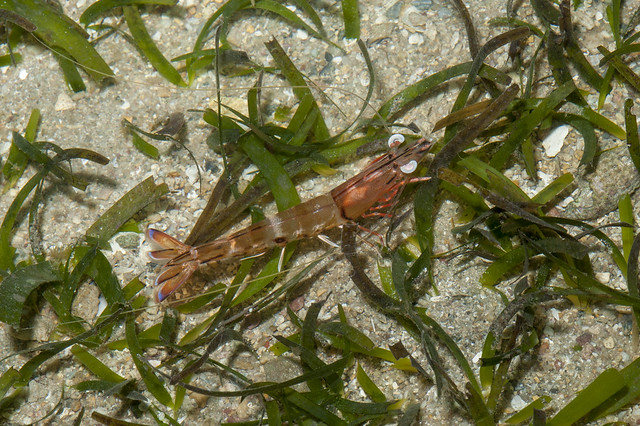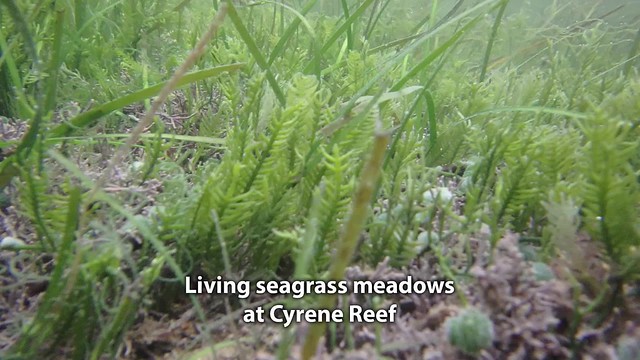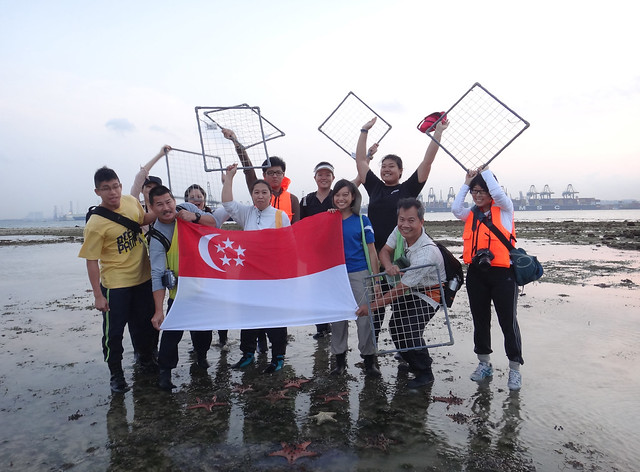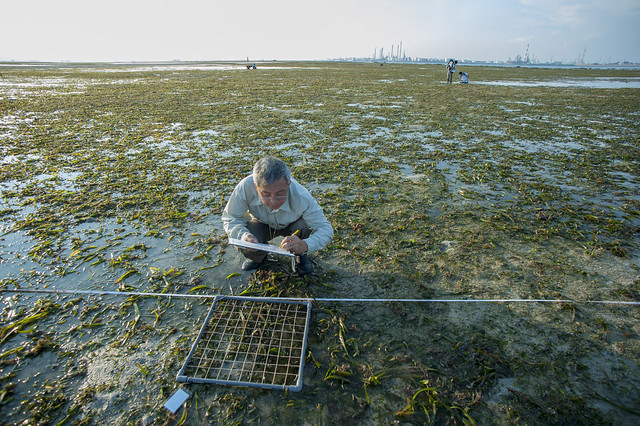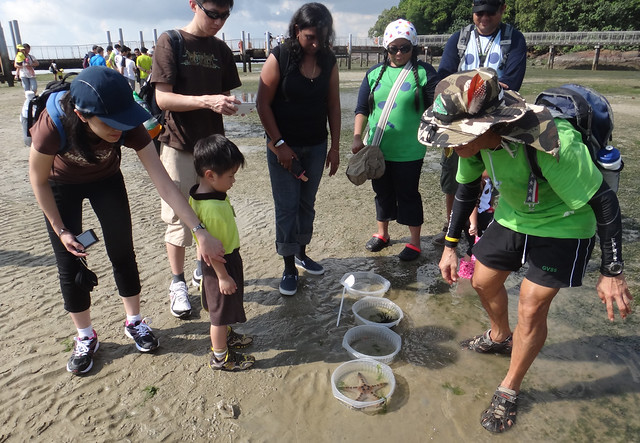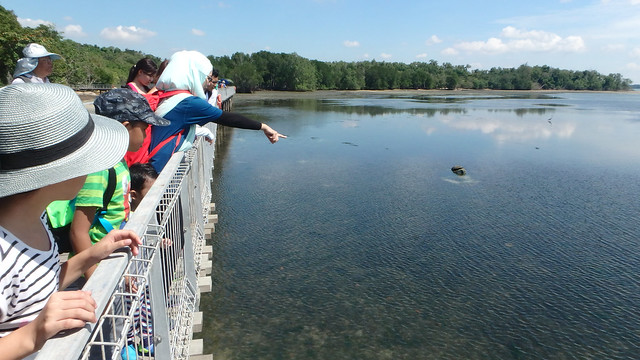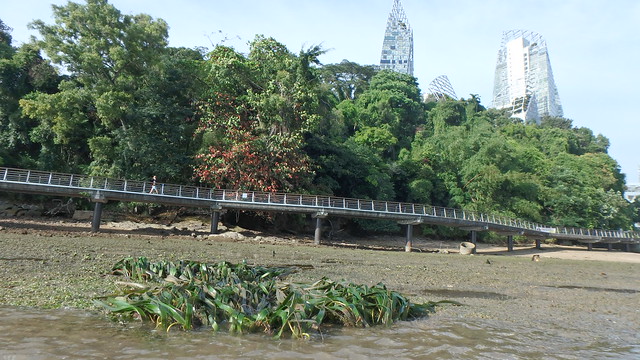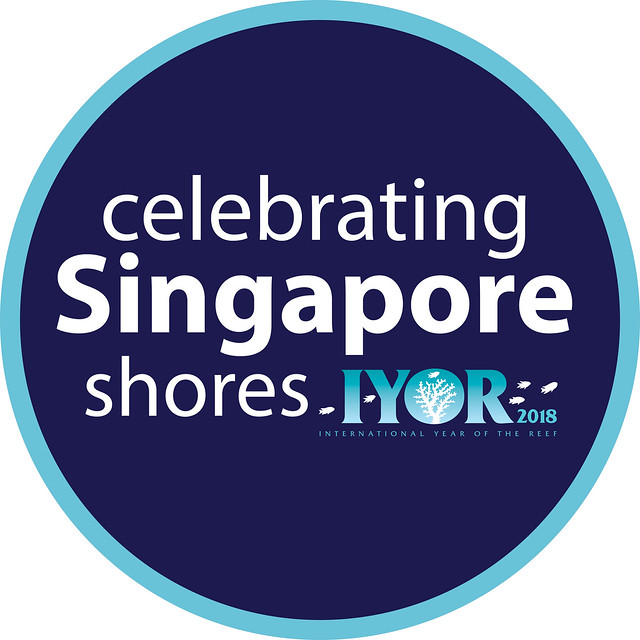 |
| Hermit crab on seagrass meadows at Changi. |
Love seafood? Then love seagrasses!
Many of our favourite seafood shelter in seagrass meadows when young. Like prawns, crabs and fishes. Here, they find safety and bountiful food. Humans are a part of this food chain!
What are seagrasses?
Seagrasses are flowering plants adapted to grow underwater in the sea, from shallow areas up to 30m deep. Despite the name, the leaves of seagrasses are not always grass-like and in fact, they do not belong to the same family of plants as the land grasses.
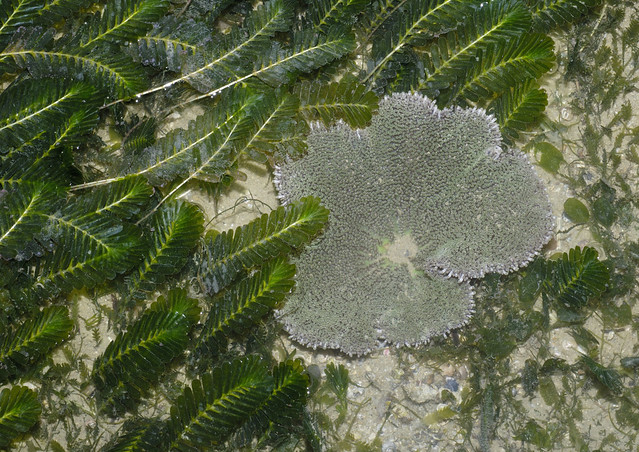 |
| Fern seagrass is found only on our Northern shores. |
Seagrass flowers are usually small and inconspicuous. Water plays a big role in pollination. Tape seagrass has large female flowers with three large petals. And tiny little male flower that float on the water like styrofoam beads.
 |
| Large female tape seagrass flower, with a few tiny male seagrass flowers in the middle. |
Like other land plants, seagrasses have green leaves which emerge from underground stems (called rhizomes). These rhizomes spread along the soft sediments. Roots anchor the plant. Thus seagrass form a firm mat over the sea bottom which stabilises the ground, while their leaves slow the water flow and thus help keep the water clear. In the stabilised ground, many burrowing creatures make their homes.
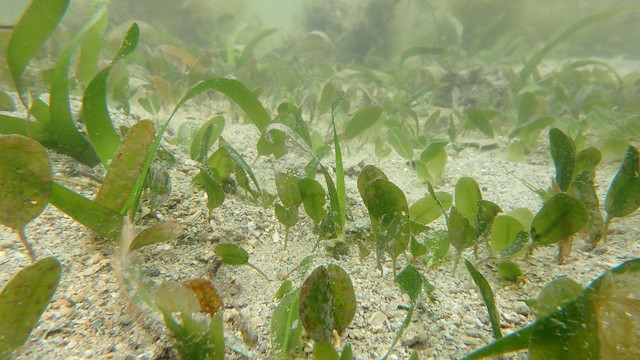 |
| Several different kinds of seagrasses. |
Seagrasses are NOT seaweeds. Seaweed are algae (like the stuff that grows on your bathroom walls) and do not have flowers. Here's more on how to tell apart seagrasses and green seaweeds.
Why are seagrasses important?
The meadows of seagrass leaves create a miniature underwater forest. This video shows some of the many different kinds of animals that live in these meadows.
Seagrasses provide shelter for many animals that are not adapted for fast swimming (e.g., the seahorse and filefish). These include juveniles of larger fishes and animals that later move out into deeper waters and include commercially important fishes and sea creatures.
 |
| There are three filefishes in this photo. Can you spot them? |
Seagrass leaves also provide a place for animals to lay their eggs, and for small animals to settle down.
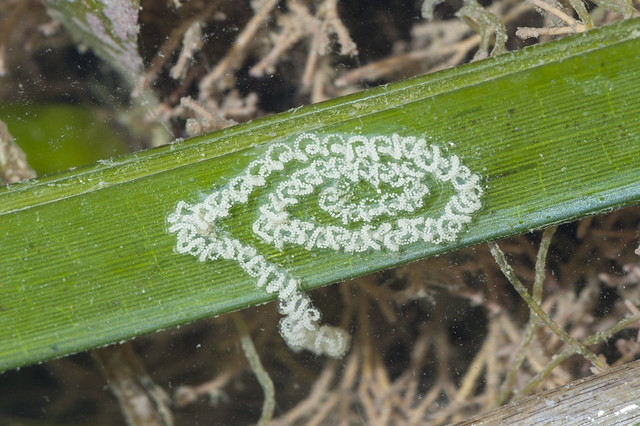 |
| Egg string laid on a seagrass leaf blade. |
Few animals can eat seagrasses, because few can digest the cellulose that makes up these plants. Among those that do feed on seagrasses are the sea turtles such as green turtles and hawksbill turtles as well as the dugong! While the dugong is rarely seen, their feeding trails are seen on almost all large seagrass patches in Singapore!
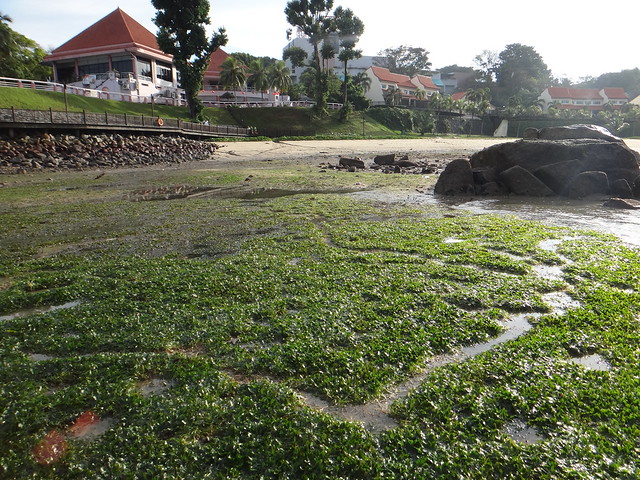 |
| Dugong feeding trails on Changi seagrass meadows. |
Seagrass meadows are vital part of a rich and diverse shore. Dead seagrass leaves as they decay, provide nutrients to other ecosystems.
 |
| Dead seagrass leaves are nutrients. |
 |
| Seagrasses next to mangroves at Pulau Semakau. |
Precious seagrasses
All our seagrasses are listed among the threatened plants of Singapore. Seagrasses are affected by careless visitors who may unknowingly trample on their delicate underground stems. Nets dragged over seagrasses also uproot them and kill the animals that live there. Marine litter (plastic bags and other rubbish) smother seagrasses. Activities that stir up sediments also obscure sunlight and affects photosynthesis and thus the growth of seagrasses.
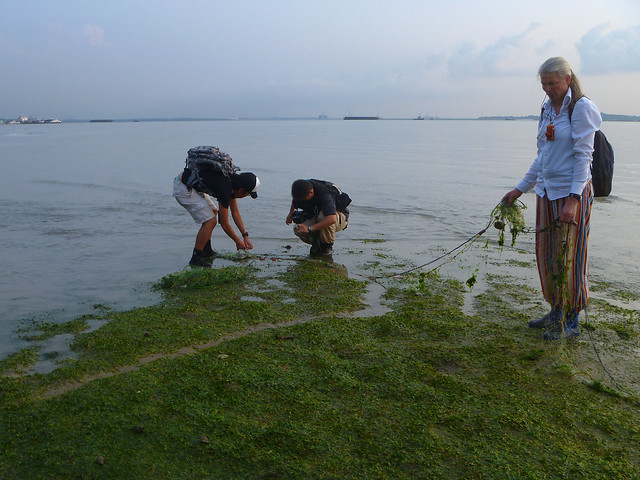 |
| Removing a net laid on seagrass meadows across a dugong feeding trail, at Changi. |
Seagrasses are also affected by oil spills and pollution that poison the water.
Here's a great poster by TeamSeaGrass with the key facts about Singapore's seagrass meadows!
How can we visit seagrass meadows in Singapore?
Keep off the grass! Seagrasses can rapidly regrow their leaves. However, if their underground stems are damaged, it takes them longer to recover. So please do not step on the seagrasses. The safest way for you and the seagrasses is to join organised activities.
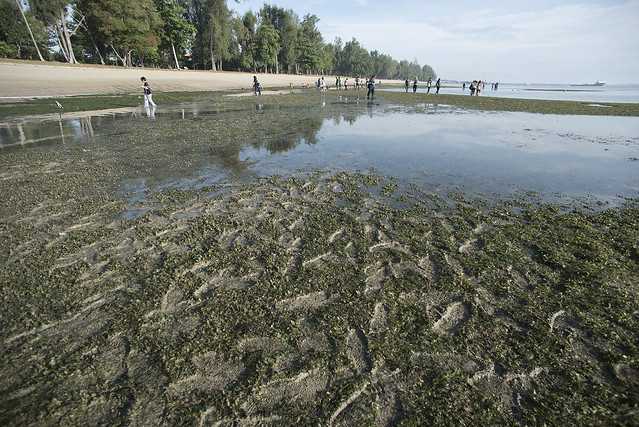 |
| Impact of people on a seagrass meadow. |
TeamSeaGrass
Join the volunteers of TeamSeaGrass to contribute to citizen science of Singapore's best seagrass meadows.
For the last 10 years, they have been scientifically monitoring seagrasses at Chek Jawa, Pulau Semakau and Cyrene Reef.
Join the Team to learn about seagrasses, how to identify them as well as help take important measurements and data so we can monitor the health of Singapore's seagrass meadows.
Chek Jawa intertidal walk
Chek Jawa has one of the best seagrass meadows in Singapore. You can get a closer look at them and the creatures that live there during the public intertidal walks conducted by NParks volunteers. The next tour dates are on 21 Apr (Sat) and 22 Apr (Sun). More details by NParks.
Chek Jawa boardwalk
You can also view the seagrass meadows from the Chek Jawa boardwalk. Join the free monthly guided tour of the Chek Jawa boardwalk by the Naked Hermit Crabs. Specially for families with kids, the tour stays on the boardwalk and does bring you to the shore. The next walk is on 14 Apr (Sat)! Subscribe to their blog or like their facebook page for updates on their next walks.
You can also visit the Chek Jawa boardwalk on your own. Free entry. No need a guide to visit. The boarwalk is open every day, 8.30am to 6pm. More about the Chek Jawa boardwalk.
Berlayar Creek boardwalk
At low tide, you can also glimpse the seagrass patches growing near the mouth of Berlayar Creek from the boardwalk. More about the Berlayar Creek boardwalk, right next to Labrador MRT station.
Have fun exploring Singapore's amazing seagrass meadows! I'd love to hear about your adventures!
Links to more information
- Seagrasses on wildsingapore with links to fact sheets about the different kinds of seagrasses found in Singapore
- TeamSeagrass on instagram, facebook and their blog.
This article is written for Celebrating Singapore Shores as part of International Year of the Reef 2018.

